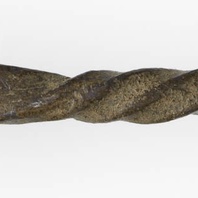
Viking Objects
Silver Ear Scoop Fragment (CM.1850-2008)
A fragment of a silver ear spoon or ear scoop with a body made from a spiral-twisted bar. Toilet articles like this were an important part of personal hygiene in the Viking Age. They were used to clean ear wax out of the ear and could be highly decorated to show off the user’s status.
Read More
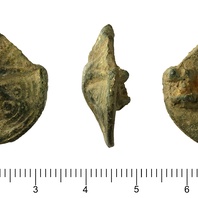
Viking Objects
Copper-Alloy Borre-Style Brooch (SWYOR-A257A6)
A Scandinavian copper-alloy Borre-style convex disc brooch decorated with three inward-looking Borre-style animal heads separated by wedge-shaped arms. Identified as Jansson type II A1 by Jane Kershaw. For more information on Scandinavian jewellery in England check out our blog: Brooches, Pendants and Pins: Scandinavian Dress Accessories in England.
Read More
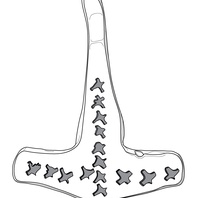
Viking Designs
Drawing of a Hammer-Shaped Pendant
A drawing of a gold hammer-shaped pendant, popularly called a Thor’s hammer pendant, from Spilsby, Lincolnshire. These may have been worn to show devotion to the god Thor, or to secure the god’s protection, although there is little evidence to support this interpretation. Pendants like this have been found made of lead, copper alloy, silver and gold, showing that many different strata of society could have worn them.
Read More
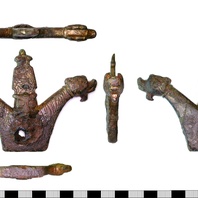
Viking Objects
Mystery Item
A gilded, copper alloy object that was clearly affixed to something else. The gilding shows that it was high status but its function remains a mystery.
Read More
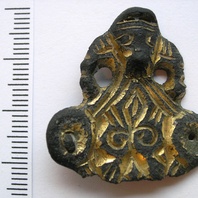
Viking Objects
Equal-Armed Brooch (SWYOR-50BAF5)
A fragment of a Viking Age equal-armed brooch found at Harworth Bircotes, Nottinghamshire. This fragment is the terminal of the brooch and resembles brooches found at Birka, Sweden. Its decoration consists of a Borre style animal with gripping arms or legs. This is one of only six Scandinavian, Viking period equal-armed brooches recorded in England. For more information on Scandinavian jewellery in England check out our blog: Brooches, Pendants and Pins: Scandinavian Dress Accessories in England.
Read More
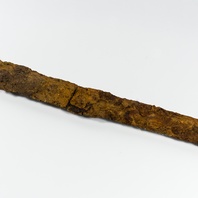
Viking Objects
Sword (1989-59/7113)
This Viking Age sword was found in Grave 511 at Repton where the invading Viking Great Army had their winter camp in 873/4. When it was found, the sword had traces of a wooden scabbard attached to the rusted blade. Analysis showed that the scabbard was lined with fleece and covered in leather. The grip was wooden and covered in a woollen textile.
Read More
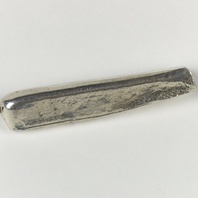
Viking Objects
Reproduction Silver Ingot
A white metal reproduction of a Viking Age silver ingot. Silver goods and coins might be melted down into ingots for ease of carrying.
Read More
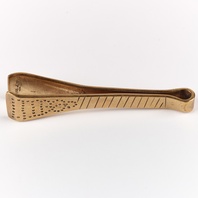
Viking Objects
Reproduction Tweezers
Tweezers were an essential toilet item for the Vikings and most people would have had their own. They could be highly decorated as were many personal possessions. They would have been carried suspended from a brooch or belt.
Read More
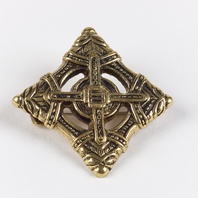
Viking Objects
Reproduction Lozenge Brooch
A copper alloy lozenge brooch in the Borre style based off a find in Lincolnshire. This type of brooch was common throughout the Danelaw in the Viking Age and was used as an accessory by women who wore Scandinavian dress. Scandinavian brooches came in a variety of sizes and shapes which included disc, trefoil, lozenge, equal-armed, and oval shapes. The different brooch types served a variety of functions in Scandinavian female dress with oval brooches typically being used as shoulder clasps for apron-type dresses and the rest being used to secure an outer garment to an inner shift. Anglo-Saxon brooches do not match this diversity of form with large disc brooches being typical of ninth century dress styles with smaller ones becoming more popular in the later ninth and tenth centuries. However, since disc brooches were used by both Anglo-Saxon and Scandinavian women they are distinguished by their morphology. Scandinavian brooches were typically domed with a hollow back while Anglo-Saxon brooches were usually flat. Moreover, Anglo-Saxon brooches were worn singly without accompanying accessories.
Read More
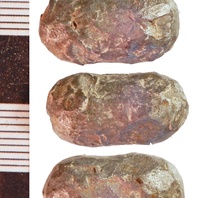
Viking Objects
Silver Ingot (NLM-ABB952)
This silver ingot was made by melting down worked silver and casting it in a mould. The Vikings arriving in England had a bullion economy in which they paid for goods with silver that was weighed to an amount agreed between the buyer and the seller. Hacksilver and silver ingots are the most common evidence for their bullion economy. It took some time for the Scandinavian settlers to adopt a monetary economy like that of the Anglo-Saxons, and both systems were used simultaneously for a while before they fully adopted the new system. The Vikings were familiar with monetary economies but they treated coins as just another form of silver before adoption of a monetary economy.
